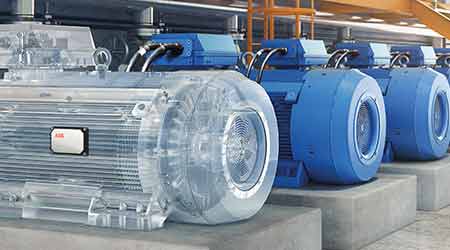 ABB
ABBMotors and Drives: Preparing for Failure
Part one of a three-part article on motors and drives
The electric motor is one of the most important components in institutional and commercial facilities. It is also one of the most overlooked — until something goes wrong and a pump system goes offline, or the air conditioning system shuts down, or the facility’s fire-safety system fails to operate during an emergency.
Contributing to the problem is the experience that most maintenance and engineering managers have with motors. They are reliable. Most motors have a long, trouble-free service life while requiring a minimum of maintenance.
But while the risk of failure might be low, the consequences of a failure often are high. At best, a motor failure is an inconvenience to building occupants. At worst, it results in significant damage to building systems and disrupts operations for an extended period of time.
Limiting the damage and inconvenience a motor failure can cause requires several things. Technicians must understand which motors support which operations within a facility, they must understand the early signs of developing problems in a motor’s operation, and the department must have a plan of action should a particular motor fail — all before the failure occurs.
Taking stock
Any program that addresses motor reliability must begin with an understanding of installed motors and their functions. Depending on the size of the facility, managers might be responsible for the operation of hundreds of motors ranging in size from fractional horsepower units to 100 horsepower (hp) or more.
At a minimum, managers and technicians should know the function each motor serves, as well as its horsepower rating, efficiency rating, frame size, operating voltage, operating speed, and age. Without this information, technicians will be blindsided when a failure occurs and might be forced to install a motor with a higher horsepower rating than the motor that failed simply because it was readily available. The result is lower operating efficiency.
Technicians then should give each motor a rating based on the critical nature of the operation it supports. For example, a motor that drives the distribution of heating water in most cases has a higher rating than one that supplies domestic hot water to restrooms.
Similarly, if redundancy exists in a pumping system in which only one pump is needed, the motor drives for that system would be given a lower rating than if there were no redundancy.
It is also important that technicians develop a maintenance history for each motor in a facility. That history is a critical element for managers who must decide if repairing or replacing a failed motor is the most appropriate move.
Related Topics:















